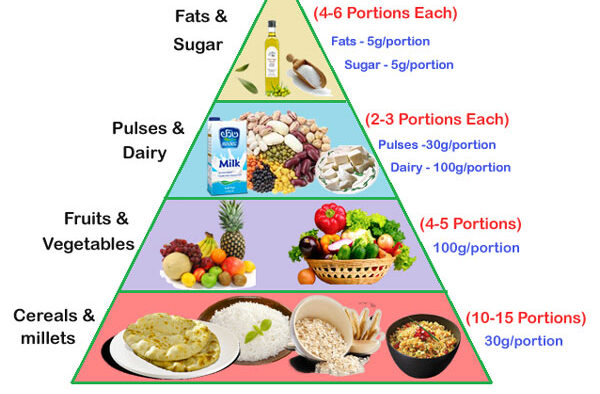In a recent study by the School of Public Health and Tropical Medicine, Tulane University, US, comparing carbon footprint of the dietary guidelines from seven different countries, the Indian dietary guidelines proved to cause the least damage to the environment.
The study examines the key contributors to carbon emissions and consumption differences between countries. The countries selected for study were Germany, India, the Netherlands, Oman, Thailand, Uruguay, and the United States. These were used to structure recommended diets using six food groups: protein foods, dairy, grains, fruits, vegetables, and oils/fats.
The report (https://nutritionj.biomedcentral.com/articles/10.1186/s12937-021-00669-6) states that the greenhouse gas emissions (GHGE) used to produce the foods in these consumption patterns were linked from the researcher’s database, constructed from an exhaustive review of the life cycle assessment literature. All guidelines were scaled to a 2000-kcal diet.
Speaking to CSP, Professor and Director of Nutrition at Tulane University Diego Rose says “India's dietary recommendations had the lowest carbon footprint mainly because the recommended amount for protein foods was lower than any of the other countries we studied and because India recommends plant protein foods (i.e., pulses) to meet that goal. In general, producing animal foods contributes many times the greenhouse gas emissions as does an equivalent amount of plant foods.”
Asked how this survey can help nations become more nature friendly, Professor Rose says, “India's recommendations have the lowest carbon footprint of the 7 countries we studied, so there is no need for revision in terms their carbon footprint. The US had the guidelines with the highest carbon footprint. Its recommended amounts for protein foods and dairy foods are very high. The countries with dietary recommendations that have higher carbon footprints could reduce their impacts by reducing the recommended amounts of protein foods and dairy foods and within those groups recommending plant-based foods instead of animal-based foods, for example legumes, nuts, and seeds instead of meats. It's interesting that the US has a set of recommendations based on a vegetarian diet, and the carbon footprint of that vegetarian plan is less than half the regular US recommendations.

Globally, more than 90 countries have developed food-based dietary guidelines, which provide brief science-based messages to promote nutritious diets. “We focused our study on government dietary guidelines, which recommend quantites of broad food groups. Because these are never specific enough to calculate a carbon footprint, we used each country's average food consumption to fill in some of the details. To determine specific quantities of foods (e.g., beef or legumes) within these broad groups (e.g. "protein foods"), we obtained information from the UN Food and Agriculture Organization. Their "food balance sheets" provide data on food supplies available for human consumption for each country. These are average figures for the whole country based on production, exports, imports, etc. So, even though these data are not taken from surveys on individual eating habits, they are still useful because they represent what a country's citizens consume in aggregate.”
The researchers say this means that the differences in the carbon footprints between countries are partly due to each country’s current consumption pattern, as reflected in these FAO data. “To control for this effect, we recalculated each country’s FBDG carbon footprint using the same food consumption pattern across all countries, that of the United States. At times, this required different aggregations of foods. For example, the protein foods group in India’s FBDG does not include meats, so we only considered plant protein foods – beans, peas, and legumes – when applying the US consumption pattern to the India FBDG,” says the paper.
Emissions from Foods: The GHGE associated with the protein food recommendations ranged from 0.03 kg CO2-eq/d in India to 1.84 kg CO2-eq/d in the US, for recommended amounts of 75 g/d and 156 g/d, respectively. Overall, US recommendations had the highest carbon footprint at 3.83 kg CO2-eq/d, 4.5 times that of the recommended diet for India, which had the smallest footprint.
After controlling for country-level consumption patterns by applying the US consumption pattern to all countries, US recommendations were still the highest, 19% and 47% higher than those of the Netherlands and Germany, respectively.
Daily recommended amounts of dairy foods ranged from a low of 118 ml/d for Oman to a high of 710 ml/d for the US. The GHGE associated with these two recommendations were 0.17 and 1.10 kg CO2-eq/d, respectively.
Indian Guidelines:
India’s dietary guidelines were first published in 1998 and revised in 2011. The development of the dietary guidelines was spearheaded by the National Institute of Nutrition. The Ministry of Health has endorsed them. The Indian report states: A variety of foods, which are available and are within the reach of the common man, can be selected to formulate nutritionally adequate diets. While there are only four accepted basic food groups, in India, there are a variety of food preparations and culinary practices. Different cereals/millets are used as staple food, apart from a variety of cereal/millet/pulse combinations in different regions of India. The cooking oils and fat used are of several kinds. The proposed guidelines help to formulate health promoting recipes and diets which are region- and culturespecific. It is difficult to compute standard portion sizes, common to all regions of India. Nevertheless, attempts are made to give portion sizes and exchanges. The Indian Guidelines report is available at: DietaryGuidelinesforNINwebsite.pdf





